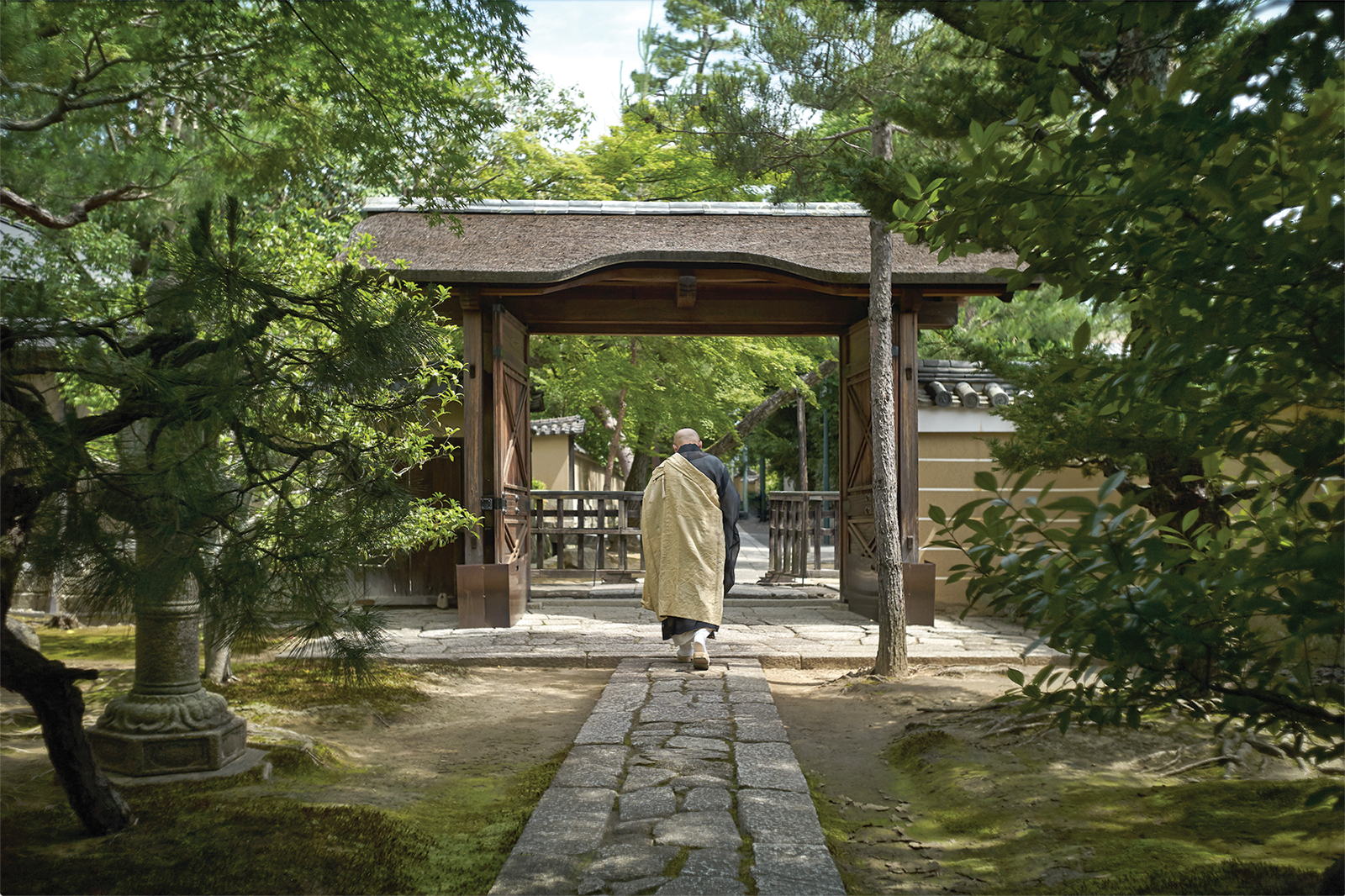
Don't Miss the International Debut of Revered Zen Masterpieces at Asian Art Museum
By Gary Singh
At its core, "The Heart of Zen" required no technology. Instead, the exhibit currently in the Osher Foundation Gallery at the Asian Art Museum features just two humble ink paintings — "Persimmons" and "Chestnuts" — attributed to the thirteenth-century Chinese monk Muqi, who employed a range of ink tones to render fruits, nuts and leaves in simple yet emotional strokes, transforming mundane objects into a numinous experience.
"Persimmons" opens on November 17 and runs through December 10, while "Chestnuts" runs December 8 through 31, allowing for just one weekend during which both paintings can be viewed together. The experience is one of meditative serenity. There are no VR headsets.

"Chestnuts" - attributed to Muqi (Chinese, active 13th century), hanging scroll; ink on paper. Collection of Daitokuji Ryokoin Temple. Important Cultural Property. Photograph © Kyoto National Museum. Courtesy Asian Art Museum
“It’s kind of running against the trend in museums these days, which is to make everything interactive and have flashing lights or lots of energetic, engaging displays,” said Laura Allen, the show’s co-curator. “This is really asking you to settle your mind and then go and look really carefully at one or two paintings and sort of have an experience of them in a very focused way.”
As a framing device to prepare visitors for the paintings, a large yet simple slideshow projects on a wall, showing the grounds and gardens of the Daitokuji Ryokoin, a famous Zen Buddhist temple in Kyoto, where the paintings have been revered since the early 1600s. The temple is normally closed to the public. This is the first time "Persimmons" and "Chestnuts" have traveled outside Japan since they were imported from China over 400 years ago.
“Since these paintings are special, we decided to take a minimalist approach,” said co-curator Yuki Morishima, adding that at first it was a tad nerve-wracking to design a show with only one or two works in the entire gallery, but simplicity became vital. Less was more, with no need for other artworks. In Japan, persimmons are popular in autumn, while chestnuts evoke a winter feel. To remain in tune with such seasonality, the two paintings are being presented individually, for most of the duration. “
We wanted visitors to focus their minds on a single, very rarely seen artwork, and to have a conversation only with these paintings,” Morishima said.
Although one often sees both paintings in books of Zen art, "Persimmons" is the one many scholars have studied and contemplated. As a masterpiece of understatement, its floating qualities, varying shades of gray and use of positive and negative space have made "Persimmons" a well-discussed historical work. The spiky burrs of "Chestnuts" provide a good contrast, showing Muqi’s mastery of brush techniques and ink tonalities.
When Muqi, a Chan monk in China, originally painted the works, he was not yet critically analyzed or considered a superstar by any stretch. Although the works were always connected with Zen, they were not painted to accompany meditation practice or for any religious purposes. They were intended to exist in the world of Chanoyu tea culture and meant to be displayed in the Tokonoma, or tea alcove, during ceremonies. It was not until Western scholars in the 20th century began writing more about Zen in general that these paintings, especially "Persimmons," were recast as timeless masterpieces infused with Buddhist perspectives of form and no-form, becoming nearly synonymous with “Zen art” in a larger sense. As a result, "Persimmons" has graced book covers and become the subject of much discussion among both Zen historians and art historians alike for the last 100 years.

Ryokoin abbot walking to the monthly ritual at Daitokuji temple, Kyoto, 2019. Image courtesy Asian Art Museum
The story of the paintings’ journey to the Asian Art Museum can be understood as an interdependent process. In May of 2017, Abbot Kobori Geppo of the Ryokoin temple in Kyoto visited San Francisco to deliver an address at the Fourth Ocha Zanmai International Conference on Tea Culture at San Francisco State University, after which he visited the Asian Art Museum. The Abbot was so impressed with the warm welcome he received, he then out of sheer compassion offered the paintings.
“We were chatting in the lobby and then he suggested to bring "Persimmons" and "Chestnuts" to the museum,” Morishima recalled. Although the abbot’s generosity came as a total surprise, the museum was honored and greatly moved by his decision. “It wasn’t a hard negotiation or anything like that,” she said. “It was just a kind offer from the Abbot.”
The exhibit text panels even include a poetic statement from the Abbot in which he claims to bring a fragment of pure, transparent air from Ryokoin, via the paintings, which are imbued with the “ever-flowing spring of Zen,” in times of joy or sorrow, in a world of tranquility or chaos. “May the Heart of Zen be the pillar for those who need Right at this time,” he writes.
Considering the history of "Persimmons" and "Chestnuts," as well as their once-in-a-lifetime appearance in San Francisco, the curators were faced with many choices. They opted not to go hi-tech this time, or include any other modern-era distractions. All puns aside, the result is just so Zen.
“We have to be selective with technology,” Morishima said. “Sometimes it works, sometimes it doesn’t. It was our decision to keep the show more contemplative.”
Abbot Kobori Geppo will return during the weekend of December 9-10, when both paintings are on display. Activities include a Dharma talk, meditation sessions and a tea ceremony.
→ "The Heart of Zen" on view through December 31 at the Asian Art Museum - more at asianart.org
Main image: "Persimmons" (detail), attributed to Muqi (Chinese, active 13th century), hanging scroll. Courtesy Asian Art Museum



